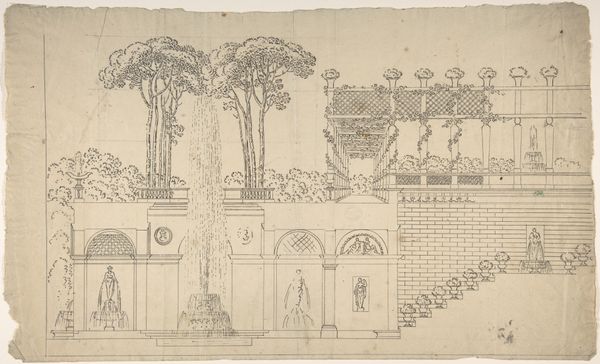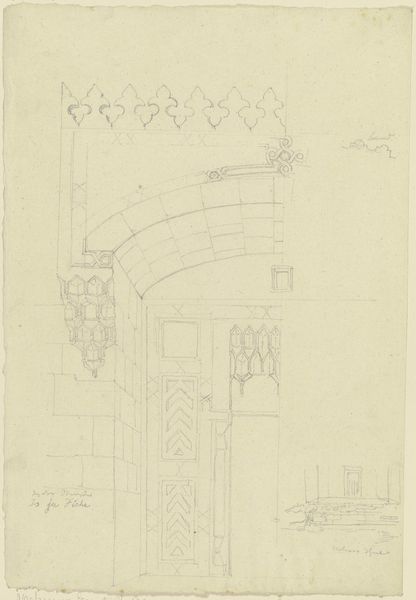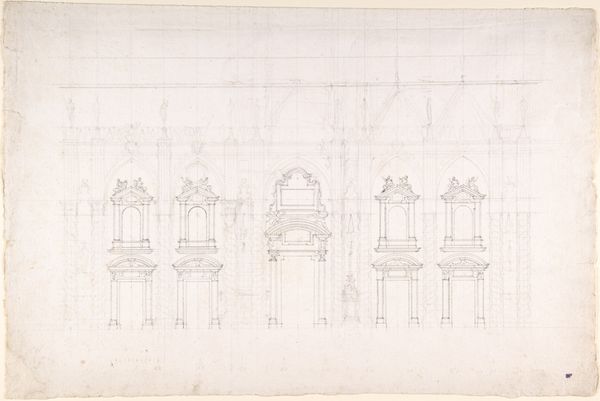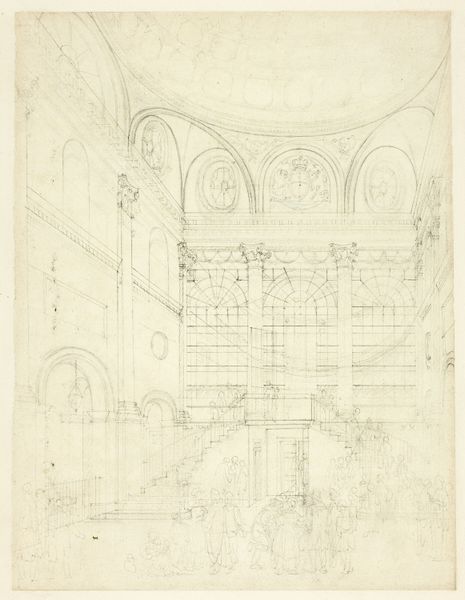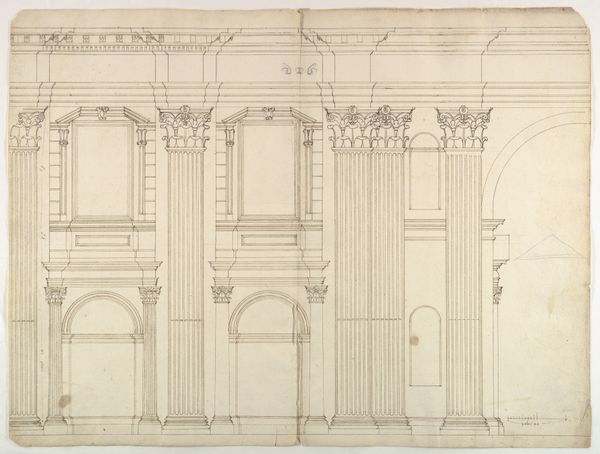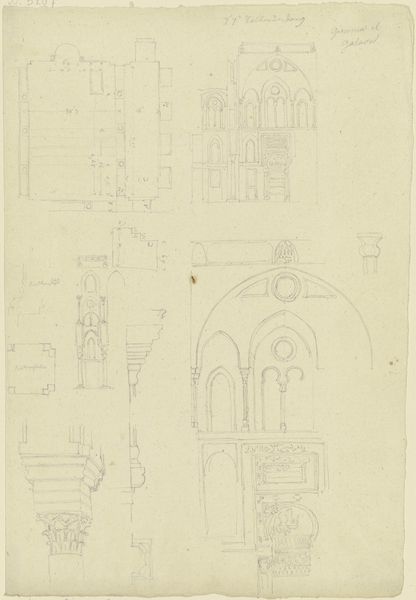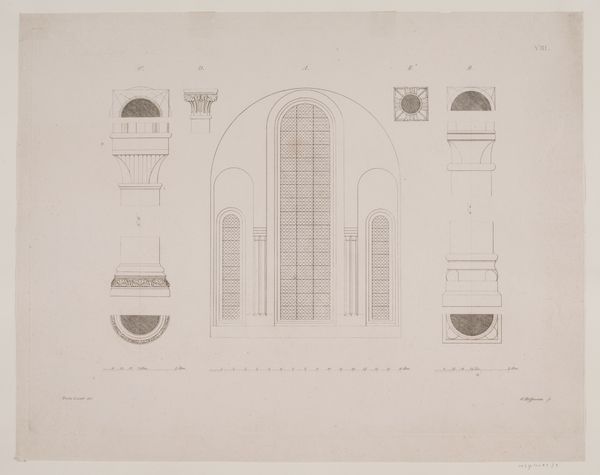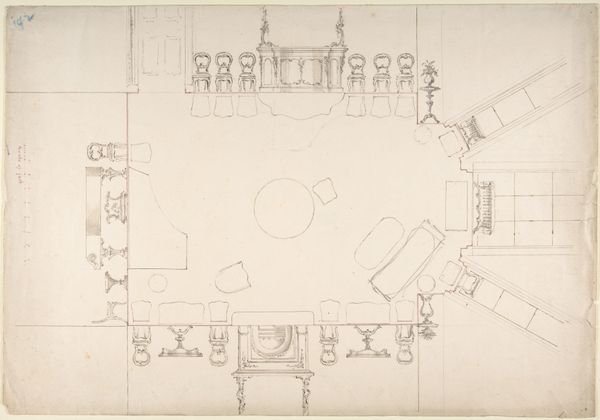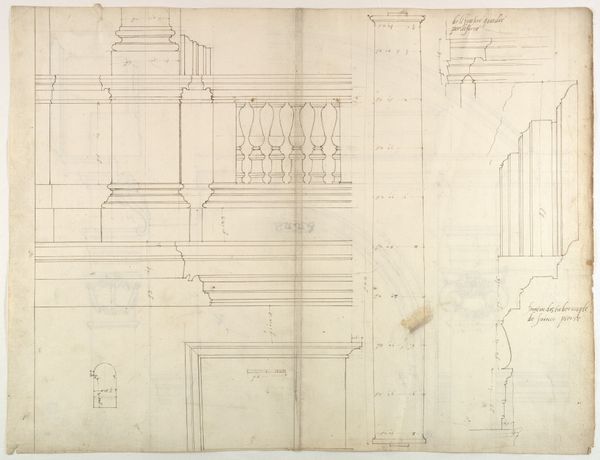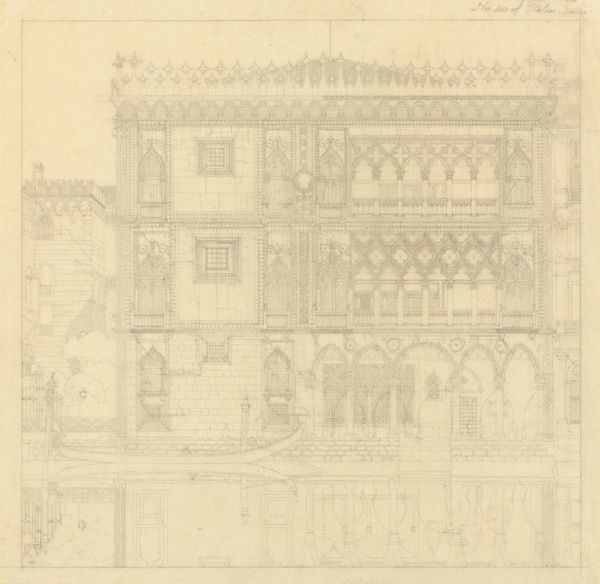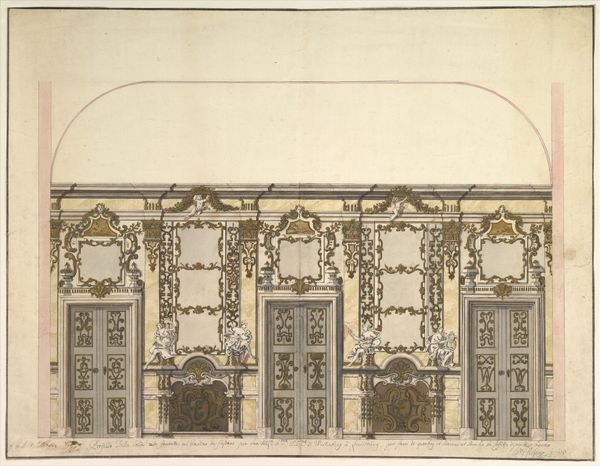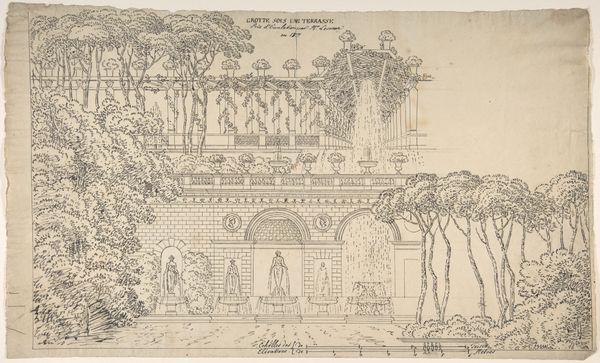
drawing, pen, architecture
#
drawing
#
neoclacissism
#
landscape
#
etching
#
pen
#
architecture
Dimensions: height 455 mm, width 730 mm
Copyright: Rijks Museum: Open Domain
Curator: Well, hello there. Up next, we have "Illuminatie van een huis te Vlissingen, 1766", or "Illumination of a House in Vlissingen, 1766," created by an anonymous artist. This meticulous drawing employs pen and etching techniques. What catches your eye initially? Editor: It's almost oppressively ornamental, isn't it? A riot of decoration struggling to contain the rigidity of the architectural form beneath. So, a building elevation – presumably neoclassical, with all that symmetry – depicted with almost baroque detailing. The materiality implied—brick, wood— is lost to the lines, creating an oddly weightless facade. Curator: It certainly presents a tension, doesn’t it? But that tension might be deliberate. This drawing, with its almost obsessive detailing, speaks to the labor involved, both in its creation and the implied labor of crafting the actual architectural elements it depicts. We see status and wealth displayed prominently through materiality. Editor: Precisely. It's easy to imagine the layers of social power baked into every brick and window frame here. Think about the source and cost of materials, but also who did the making and their conditions of labour. Curator: It's also interesting to consider Vlissingen's context at the time. A prominent port city engaged in global trade, including, let's not forget, the trade of enslaved people. Does that impact your viewing of this particular building facade? Editor: Absolutely. This level of ostentation often masked brutal realities. Who financed such grandeur? How was that wealth obtained? What communities suffered to make it happen? These aren’t just questions, they are part of the illumination in their own way, revealing uncomfortable truths. The pen strokes can feel very heavy, then. Curator: I agree. Perhaps it is an elegy of exploitation. While, superficially, a rendering, the careful strokes represent complex economic activities related to power. Editor: I think engaging with such issues brings this drawing to life, turning what might appear as an interesting exercise in line work into a critical document. Curator: Exactly. I find myself rethinking this drawing, thanks to this dialogue, understanding what appears at first blush and a deeper interpretation. Editor: As do I. The best art demands these conversations.
Comments
No comments
Be the first to comment and join the conversation on the ultimate creative platform.
